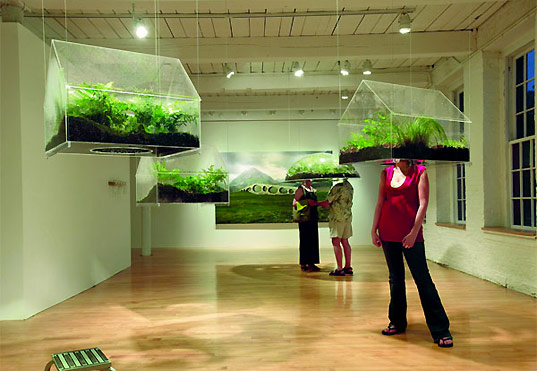For more information contact:
Patrick Kowalczyk, patrick@pkpr.com
Mark McArthur, mark@pkpr.com
PKPR, 212.627.8098
“AN AIRBNB FOR ARTISTS”: SPACEFINDER TORONTO MATCHES ARTISTS WITH UNDER-UTILIZED REHEARSAL AND PERFORMANCE SPACE
Created by U.S. arts org Fractured Atlas, SpaceFinder network to also expand to Hamilton, Ontario in fall 2015
New York, NY (April 30, 2015) – Similar to how AirBnB has opened up a new marketplace for accommodation rentals, a new service is matching Toronto artists with more than 375 under-utilized and alternative rehearsal and performance spaces throughout the city and is poised to launch in a second Canadian community – Hamilton, Ontario – in fall 2015.
Developed by Fractured Atlas, a New York-based organization dedicated to helping artists build sustainable careers through technology, SpaceFinder serves 11 markets throughout the U.S, offering venues a powerful tool for marketing spaces that would otherwise go unrented. The official debut today of SpaceFinder Toronto and the upcoming launch of SpaceFinder Hamilton (Fall 2015) mark the first international expansion of a Fractured Atlas program.
Any venue with rehearsal or performance space in Toronto can promote their rentals on SpaceFinder by creating listings that include a synched calendar to display up-to-date availability, rental rates, photos and equipment inventories. Artists can then easily discover available and alternative space that fits their budget, and creative needs.
Many Toronto venues using SpaceFinder during the beta testing period over the past six months reported significant increases in rental referrals and revenue.
“SpaceFinder Toronto has increased our rentals by 25% in only a couple months and connected us with new renters from various artistic disciplines,” said Kate Nankervis, co-artistic director of Hub14, an artist-run dance studio co-op. “SpaceFinder Toronto’s greatest asset is its fluid administration system, which has helped us cut back on our work load and allowed us to focus on what we do best – serving the artists of our community.”
The SpaceFinder program was brought to Toronto thru a collaboration of ArtsBuild Ontario, the Toronto Alliance for the Performing Arts, and WorkInCulture, with initial launch funding provided by the Metcalf Foundation.
Adam Huttler, Founder and Executive Director of Fractured Atlas, said ArtsBuild Ontario has also partnered with Fractured Atlas on the expansion of SpaceFinder throughout the Ontario province including the fall 2015 launch of SpaceFinder in Hamilton, with local leadership from Hamilton arts nonprofit CoBALT CONNECTS who launched their own creative directory map in 2012 which has grown to over 700 listings and will be the source of initial venue data.
“ArtsBuild is thrilled that SpaceFinder has been embraced by so many so quickly in Toronto, and we look forward to the same success in Hamilton and beyond,” said Karen Stintz, executive director of ArtsBuild Ontario. “This affirms our belief that innovative approaches are keenly desired and that smart collaborations are the way to go.”
Huttler applauded ArtsBuild Ontario’s vision for leveraging SpaceFinder to serve Canada.
“Rather than Canadian communities having to build an expensive service from scratch on their own, we are thrilled to partner with ArtsBuild Ontario on empowering those communities to deliver a valuable service with proven impact,” said Huttler.
Fractured Atlas is in talks with communities, such as the City of Calgary, with cultural plans created with input from local citizens, who identified inventory and discovery of cultural spaces as necessary to the growth of the creative economy and retention of creative talent.
The Canadian launch of SpaceFinder builds on Fractured Atlas’s track record of providing artists with technology tools that help them raise money, insure themselves and their work, manage their careers, and grow their audiences. Its major initiatives include Artful.ly, a free, cloud-based software system that enables small arts organizations to easily sell tickets and raise funds, as well as its fiscal sponsorship program, which helped more than 3,500 arts projects raise over $17.6 million in 2013-2014.
About Fractured Atlas
Fractured Atlas is the largest arts service organization in the U.S., reaching a network of more than 250,000 artists. Dedicated to empowering artists with the support they need to work effectively and thrive, Fractured Atlas provides funding, insurance, technology, education, and other services critical to building sustainable careers and organizations. Founded in 1998, Fractured Atlas is headquartered in New York City. For more information, visit the Fractured Atlas Media Center at http://www.fracturedatlas.org/site/about/media.
About SpaceFinder
For artists, the process of finding available and affordable work space is frustrating and inefficient. Meanwhile many spaces are tragically underutilized, even as rental revenue
continues to be critical for sustainability of creative venues. SpaceFinder is an innovative solution for both artists and creative venues.
For cultural policy-makers the decision making process around building projects, subsidizing venues, or re-purposing space for cultural use often presents a serious challenge. The data collected through SpaceFinder about where spaces are and what artists are looking for can help cultural policy-makers make more informed decisions.
# # #





